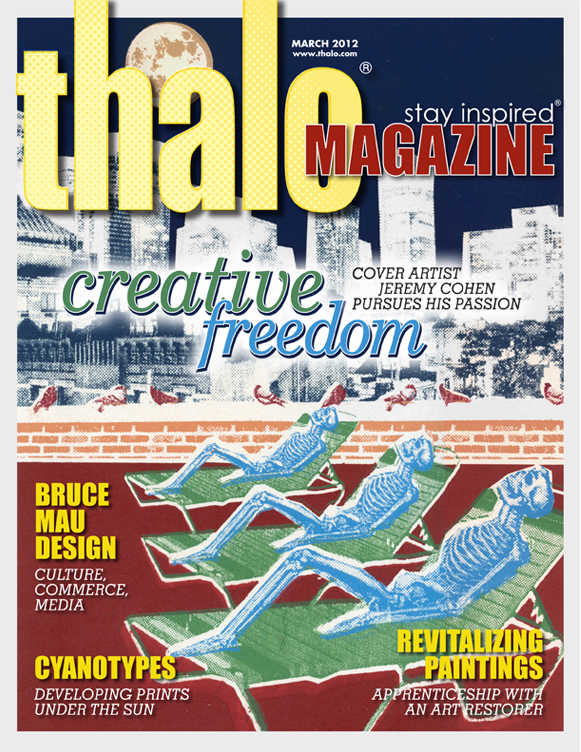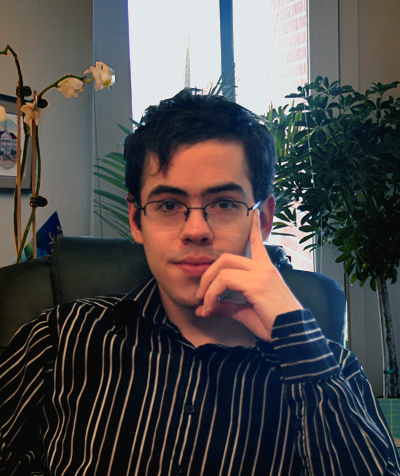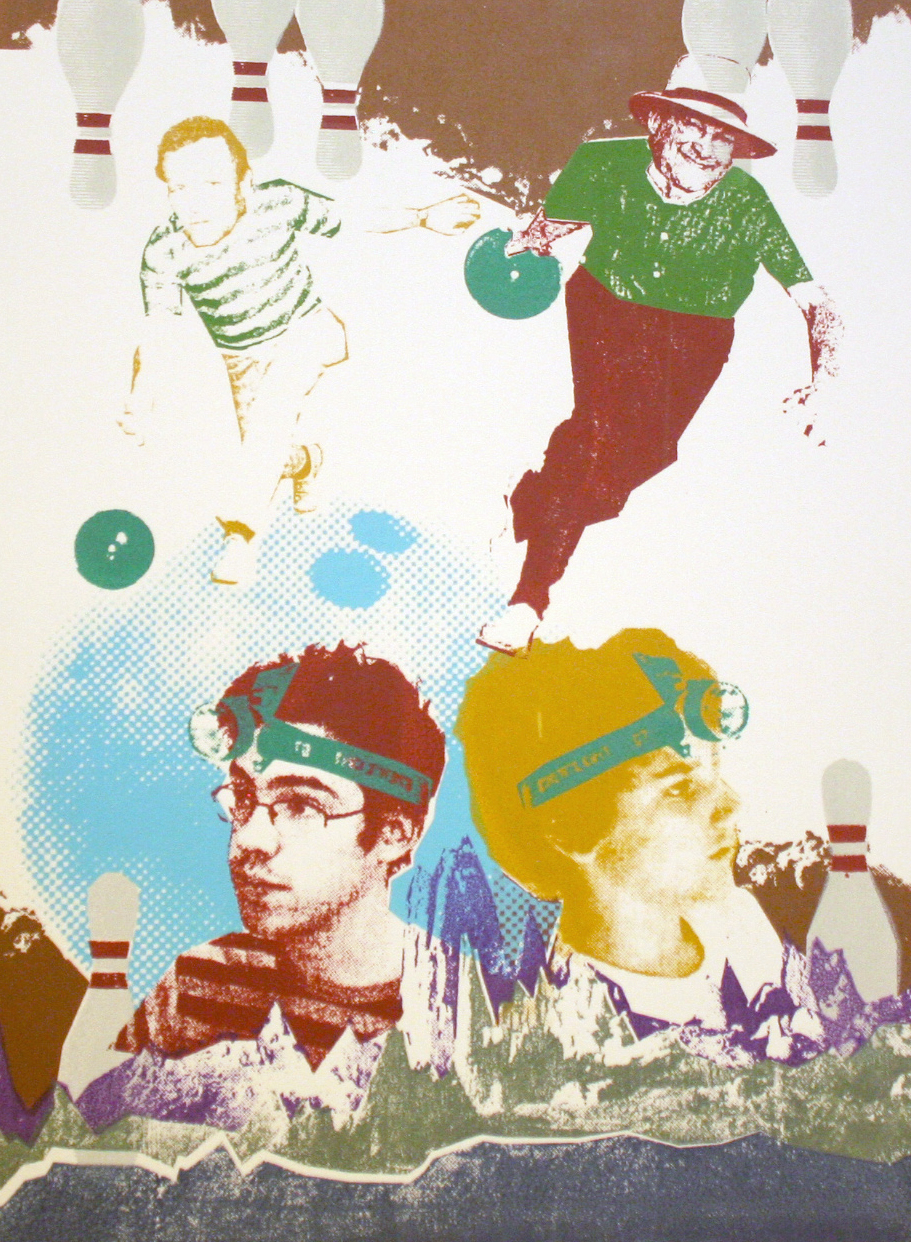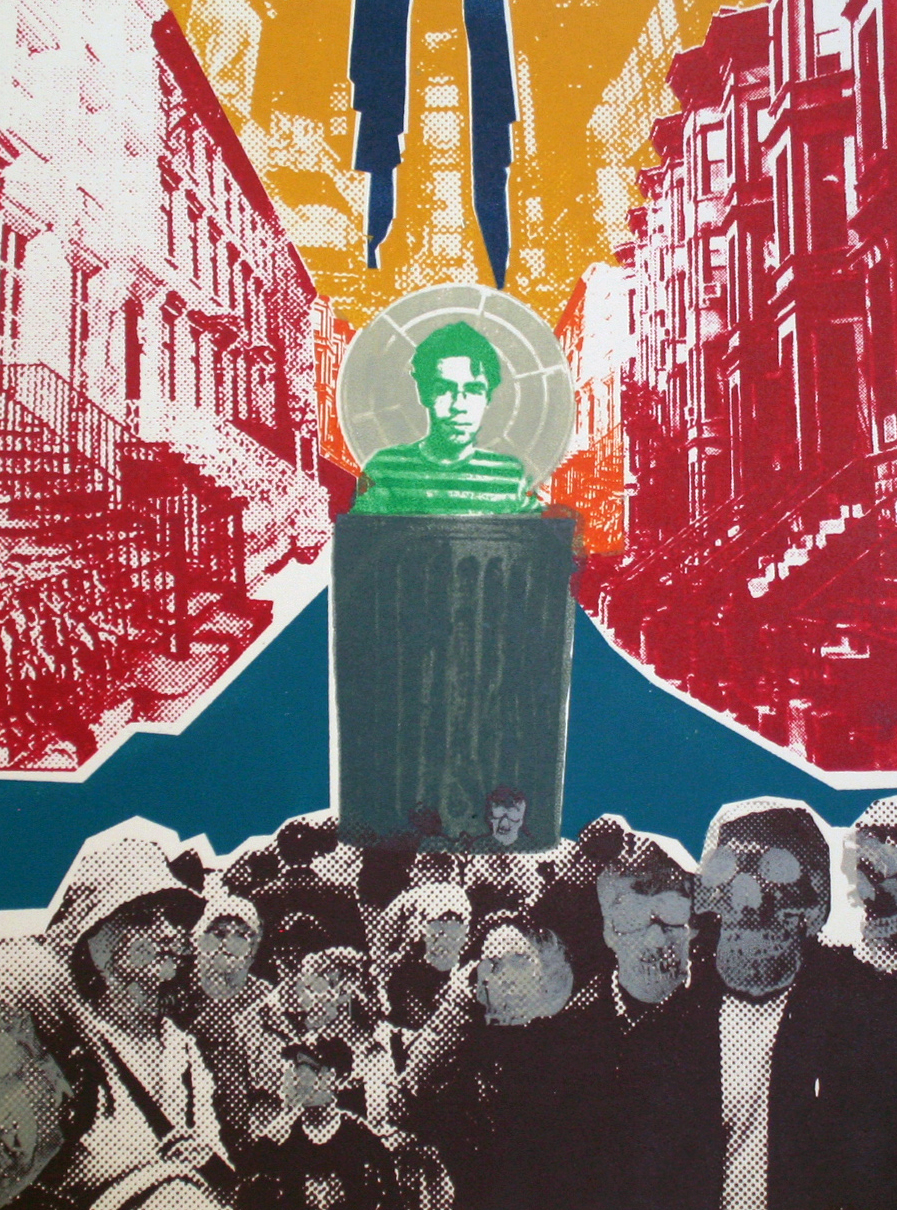
 March Cover ArtistCover Artist: Jeremy Cohen
March Cover ArtistCover Artist: Jeremy Cohen 


Jeremy Cohen is an artist, originally from a mountainous area of Roanoke, VA amongst railroads and the suburbs. From a young age he was observant of the truth behind everything and began his search for an expression of what he found. From elementary school on he studied art. His drawing and formation of artistic ideas continued through high school but he was disappointed with the lackluster and imperfect instruction there and an absence of permission or means of expressing them. Once in college a freedom came and with proper instruction, Jeremy rocketed on the creative path he had been searching and striving for since the beginning. Many batches of artwork began to appear in every different medium representing all the new truths and experience he had found. With the help of the instruction, self-recognition of errors and a finesse was carefully forged through a studious and open attitude. Now after attaining his degree he has put his efforts towards getting his art into the commercial world for the purpose of recognition and employment. The combination of his skills has allowed him platforms through which to deliver and expose his work. These skills continue to become honed as he strives to solve everyday artistic questions and send the world his creations and services
thalo: Tell us a little bit about your featured piece, Moontanning.
Jeremy Cohen: One night I felt the moonlight as if it were sunlight and felt the warmth radiating off my skin, I imagined that one could possibly tan in it in the light (since it is reflected sunlight) but I wondered what kind of person would do that. I figured moonlight is a very pure white and since skeletons are white they would use the light to bleach their bones much like humans use sunlight to bronze their yellow skin.
th: Skeletons appear in a few of the works on your website. Are you drawn to skeletons as a recurring motif, or is it accidental? What do you think it is that makes them show up in your work?
JC: : Skeletons have a certain aesthetic that I find symbolically carries various contextual meanings. Skeletons are a reminder of death. There are many kinds of death: you can be alive and still be dead
th: : In addition to traditional painting and illustration, you do a lot of work with silk-screening and graphic design. Do you prefer one medium over another?
JC: Yes, I prefer painting. The foundation of my silk-screening process for art prints is by using design to plan out my prints. I plan out my paintings but unexpected paint strokes can lead in different directions whereas silk-screening lacks that spontaneity
th: You’ve done a lot of graphic design work for City Harvest, a company that works to rescue food from being thrown away in order to help feed the hungry. As a graphic designer, is it more satisfying to work on a project for such a company?
JC: The City Harvest design was actually a hypothetical redesign for a real company, but my answer is that I do enjoy working with clients whose ideals I share. When I have done CD art for bands I support it's a unique way to be involved with bands that I enjoy.
th: As an artist and a graphic designer, what made you choose graphic design for your degree?
JC: I chose it for its practicality, the real world application allows me to have a job and pursue my art. The tools I have learned in design have helped me in innumerable ways. The design concentration was a more intensive program, but I was still able to study fine arts to a pretty full extent. Whereas I could not have just been introduced to graphic design, taking a few classes on painting was just what I needed to develop as a painter
th: What would you tell students considering graphic design as a career?
JC: Graphic design reveals a whole hidden world of order. You will find your knowledge and appreciation of design impacting every part of your life.
To see more of Jeremy's work visit http://www.jeremycohenart.com/.
permalink | past covers
